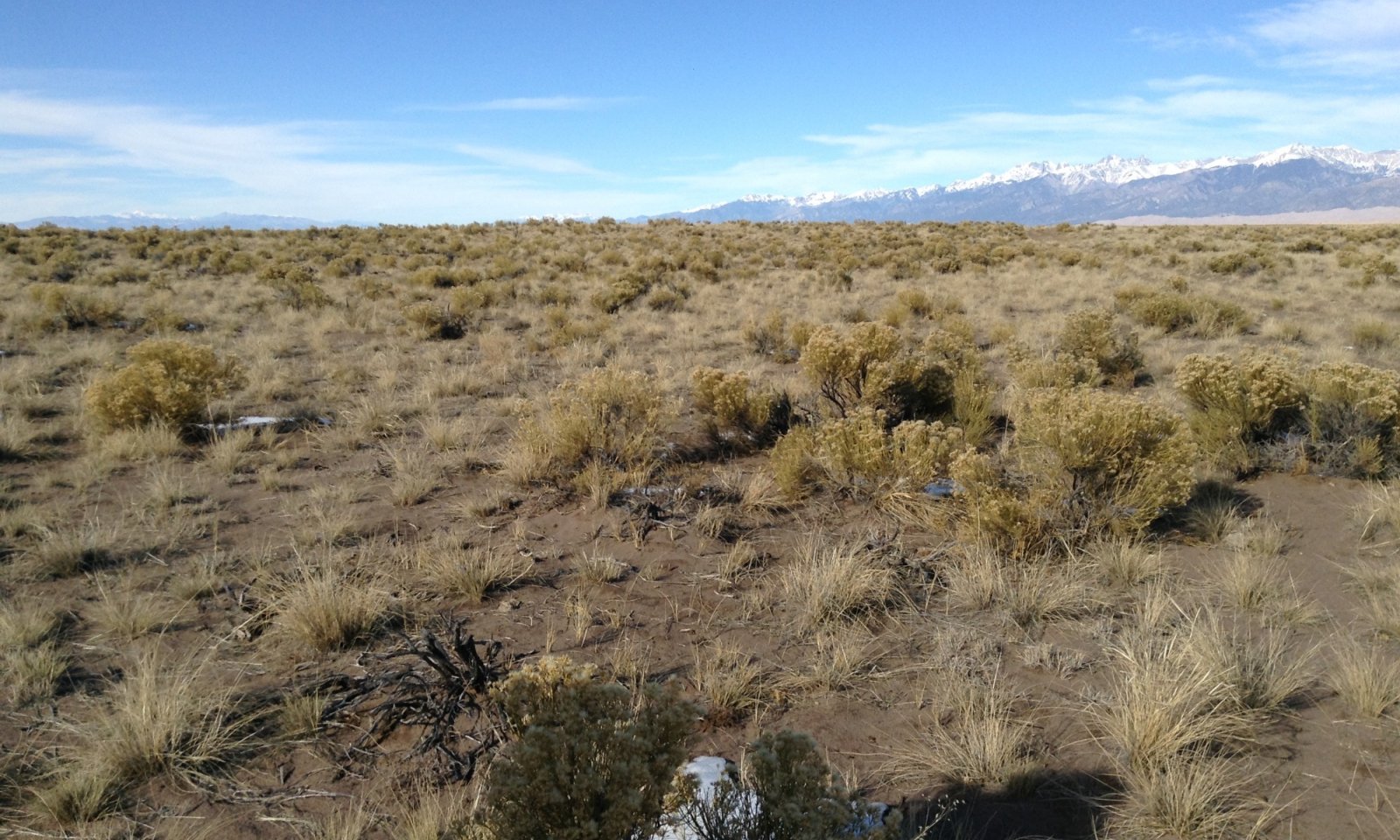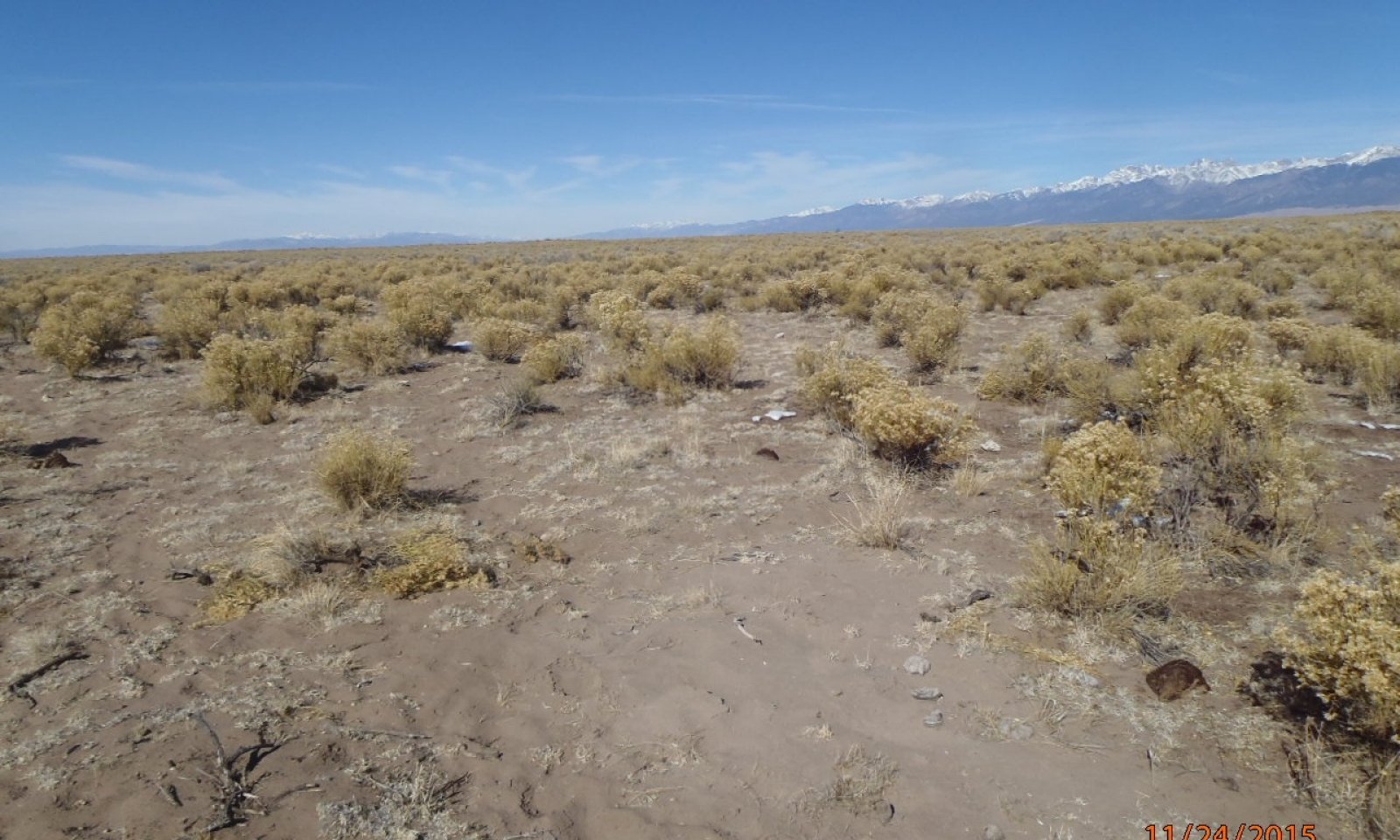
Valley Sand
Scenario model
Current ecosystem state
Select a state
Management practices/drivers
Select a transition or restoration pathway
- Transition T1A More details
- Restoration pathway R2A More details
-
No transition or restoration pathway between the selected states has been described
Target ecosystem state
Select a state
Description
The reference state has a mix of cool and warm season grasses and shrubs. Species diversity helps stabilize the site during times of drought, which are frequent in the San Luis Valley. A diversity of root systems help reach deep to a water table during times of drought as well as take advantage of precipitation events during the growing season.
Resilience management
The reference state is most sustainable and able to be resilient with disturbance. Disturbance such as drought, fire, and herbivory are common on this site and the diversity, production, and litter cover of the reference state provides stability.
Submodel
State 2
Degraded



Description
This is a degraded state where areas of bare soil are dominant. Shrub species such as rubber rabbitbrush, Greene's rabbitbrush, and greasewood dominate the vegetative composition as they can send tap roots to capture moisture deep in the profile or to the water table. Grass species that are still present include alkali sacaton, saltgrass, sand dropseed, and threeawn. Prickly pear cactus is also scattered throughout.
Resilience management
This is a degraded state and poorly resilient to disturbance. Drought especially takes its toll in this state as the site has lost hydrologic function and grass species struggle to maintain moisture and colonize. Erosion exacerbates the degrading feedback loops as soil binding agents are minimal to non-existent and cover is weak.
Submodel
Mechanism
The main driver is repetitive defoliation and high utilization of palatable species over multiple years during the growing season and especially during drought. This decreases the health and vigor of important plants and eventually leads to a decline in soil health and hydrologic function. Drought is the common trigger event, killing off most shallow rooted, low-vigor grass species and leaving deep-rooted shrubs.
Mechanism
The degraded state often has grasses hidden within and around shrub species. Alkali sacaton is an important species for re-colonization of the site as it often lingers, even in the degraded state. Long term management, with monitoring to allow recovery of all plants is needed. To promote a mix of warm and cool season plants, rest during critical growing seasons is important. Allowing time for plants to recover after being bitten is important as well. Eventually, with alkali sacaton leading the way, plant diversity, cover, and biomass will recover on this sandy site.
Model keys
Briefcase
Add ecological sites and Major Land Resource Areas to your briefcase by clicking on the briefcase (![]() ) icon wherever it occurs. Drag and drop items to reorder. Cookies are used to store briefcase items between browsing sessions. Because of this, the number of items that can be added to your briefcase is limited, and briefcase items added on one device and browser cannot be accessed from another device or browser. Users who do not wish to place cookies on their devices should not use the briefcase tool. Briefcase cookies serve no other purpose than described here and are deleted whenever browsing history is cleared.
) icon wherever it occurs. Drag and drop items to reorder. Cookies are used to store briefcase items between browsing sessions. Because of this, the number of items that can be added to your briefcase is limited, and briefcase items added on one device and browser cannot be accessed from another device or browser. Users who do not wish to place cookies on their devices should not use the briefcase tool. Briefcase cookies serve no other purpose than described here and are deleted whenever browsing history is cleared.
Ecological sites
Major Land Resource Areas
The Ecosystem Dynamics Interpretive Tool is an information system framework developed by the USDA-ARS Jornada Experimental Range, USDA Natural Resources Conservation Service, and New Mexico State University.

